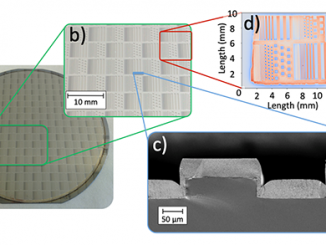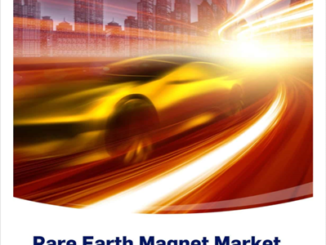A Column by Dr. Stan Trout
Whether we like it or not, we now live in an era of relatively high and fluctuating rare earth prices. While some people yearn for the days of cheap rare earths, the idea that they will return any time soon seems unrealistic. Rather, it is important to recognize that we are in the midst of a major paradigm shift that demands our attention and action. What does seem very realistic and practical today is reviewing our designs to be sure that we are making the best use of our magnets.
In previous columns, I have written about reducing the amount of dysprosium we use in our sintered NdFeB magnets and optimizing our designs to reduce waste. These are steps in the right direction. However, lowering the Dy content may not always be possible.
In the fall of 2011, I spoke to some people who had given up on sintered NdFeB in favor of SmCo. They may have since changed their opinion; however, at that time, some grades of SmCo were less expensive than sintered NdFeB, especially the higher Dy-containing grades of NdFeB. That is a price situation that I thought I would never see! Of course, switching to SmCo means becoming vulnerable to cobalt price fluctuations; but for the time being, that does not appear to be an issue.[1] But we do need to be careful not to overreact to the price increases, because they do not appear to be permanent. Fundamentally we need to be prudent; our action needs to be proportional to the problem.

In some cases, I have seen designs with both NdFeB and SmCo options. Similarly, it makes sense to look at both bonded and sintered NdFeB solutions. This kind of flexibility seems very wise to me, since it gives users the ability to buy the least expensive magnet material at any point in time in the future.
In this column, I want to focus on a small change that gives a tangible benefit with a relatively small amount of engineering. But first some background information on magnet processing.
Sintered NdFeB magnets are pressed in three distinct ways, which lead to slightly different products. These methods include axial, transverse and isostatic pressing, as shown in the figure. For those not familiar with the names, they describe the relationship between the pressing axis and the alignment axis. Axial pressing means the pressing and alignment axes are the same. Transverse pressing means the pressing axis is perpendicular to the alignment axis. And isostatic pressing means the pressure is applied equally in all directions. In addition, isostatically pressed magnets are aligned independently, before they are pressed.
Pick up product information from any sintered NdFeB producer and you will see the magnetic properties of magnets pressed by these three methods are not the same. You will likely notice an improvement from axial to transverse to isostatic, a sure sign that the ability to align powder improves from axial to transverse to isostatic pressing. As an example, this trend is demonstrated nicely by the magnetic properties of Vacodym 633, shown in the table.
The same general behavior is found with nearly all grades and producers. In this case, there is about a 7 percent increase in Br from axial to isostatic and a 5 percent increase from axial to transverse. Note that these increases take place with no change in the chemical composition of the magnet and that most of the other magnetic properties are unaffected by the pressing method used. A major exception is energy product, which increases about twice as much as Br.
Would a 5 to 7 percent increase in flux without a change in material be helpful? It seems like it would be. It could be used either to increase the amount of available flux, to decrease the amount of material needed (again in the 5 to 7 percent range depending on the application) or even some combination of the two.
So the first order of business, if you don’t know already, is to find out how your sintered NdFeB magnets are pressed. If they are axially pressed, ask if you have other options. It is a discussion worth having with your supplier. And while you’re at it, be sure to do the necessary engineering to assure that what I have claimed abstractly actually applies to your specific situation.
Does this mark the end of axial pressing? It seems highly unlikely to me given that some configurations are very difficult to do any other way. However, we do need to exploit every possible way to use magnets more effectively, and this is one of many ideas to consider.
References
[1] Caveat emptor. I made a similar pronouncement about samarium in my fall 2010 column and its price immediately shot upward.
 About the Author
About the Author
Dr. Stan Trout has more than 30 years experience in the permanent magnet and rare earth industries. Dr. Trout has a B.S. in Physics from Lafayette College and a Ph.D. in Metallurgy and Materials Science from the University of Pennsylvania. Stan is a contributing columnist for Magnetics Business and Technology magazine and the Director of the Magnet Business for Molycorp Minerals, LLC. Spontaneous Materials, his consultancy, specializes in technical training on magnetics. He can be reached at strout@ieee.org.
Published in the Summer 2012 Issue



